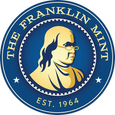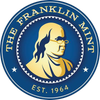George Washington might be one of our nation’s most prominent figures. Not only because he was a Founding Father and the 1st President of the United States, but also because he had a profound influence on America’s history. Consequently, we have decided to compile this general profile about his life, his beginnings, presidency, personal life, and much more.
Before delving into his life, let us first ask: who is George Washington?
George Washington
George Washington was a Virginia plantation owner who became the first president of the United States after serving as a general and commander-in-chief of the colonial armies during the American Revolutionary War. He served from 1789 to 1797.
Early Life
Washington was born in Westmoreland County, Virginia, on February 22, 1732. He was Augustine and Mary Ball Washington’s eldest child of six: George, Elizabeth, Samuel, John Augustine, Charles, and Mildred. The family was considered middle-class as they lived in Westmoreland County, Virginia, on Pope's Creek.
Washington may trace his ancestors' arrival in North America to his great-grandfather, John Washington, who immigrated to Virginia from England. In England, the family was well-known, and Henry VIII granted them land. However, Oliver Cromwell's Puritan government wiped out all of the family's fortune in England. Lawrence Washington, Washington's ancestor, moved to Virginia in 1657. Until Washington's father, Augustine, was born in 1694, little is known about the family in North America.
George's father was a prominent planter and a justice of the county court in the area. He was once involved in starting iron mines and building mills. Jane Butler was his first wife, and they had three children together: Lawrence, Augustine Jr., and Jane. He married Mary Ball (George Washington’s mother) in 1731 after Jane died in 1729.
Childhood and Education
George Washington's childhood is a mystery, and it remains the most misunderstood period of his life. Augustine, George's father, died when he was eleven years old, leaving much of his assets to George's adult half brothers. The money, from what was left, was barely enough to keep Mary Washington and her children afloat. George, as the eldest of Mary's children, undoubtedly assisted his mother in the management of their Rappahannock River plantation, which made him realize the importance of hard work in one’s life.
Education
Washington did not have the privilege to receive the proper education that he needed due to his father’s death, which left the family with very limited funds for educating him. The young man's only formal education was offered by private tutors and a local school in Fredericksburg. However, he had a passion for seeking life-long knowledge, and it showed. Even though he hadn’t attended college or had any formal education, he encouraged everyone around him to keep pursuing their education and to read. It would be safe to say that George Washington was self-taught because he started reading and experimenting to improve his area of knowledge. This path towards self-improvement was influenced by his relationship with his half-brother, Lawrence, who introduced Washington to Virginia’s nobles and elites. Not only that, but also his lifelong friendships with the Fairfaxes taught him math and science surveying techniques.
Some Interesting Facts:
- Washington made a copy of the Rules of Civility and Decent Behavior in Company and Conversation when he was 14 years old.
- He was a keen reader of modern farming techniques and was constantly experimenting with new plants and methods.
- George Washington was deeply embarrassed by his lack of formal education in his life. The founders were mostly college-educated gentlemen who had spent years studying law and the classics. Washington was one of the few leaders of his generation who did not have a privileged education.
- George Washington's library had over 1,200 titles at the time of his death. Many of these books are now secured at Mount Vernon's Fred W. Smith National Library for the Study of George Washington.
Military Career
Washington hadn’t had any previous experience in the military, however, he displayed early signs of natural leadership. Because of this, Virginia's Lieutenant Governor, Robert Dinwiddie, appointed Washington as a commander in the Virginia militia in December 1752.
After serving in the French and Indian War, he was given command of all of Virginia's militia forces, at the age of only 23. He was sent to the frontier to monitor and defend nearly 400 miles of the border. This led to a deterioration in his health, and he was eventually sent home in the year 1757.
Shortly after, Washington returned to service in 1758, this time on a mission to seize Fort Duquesne. It resulted in 14 of Washington's men being killed and 26 wounded. The British, on the other hand, were able to secure a major victory by taking Fort Duquesne and gaining control of the Ohio Valley. The aggravating war that he experienced resulted in him leaving the Virginia army by the end of that year.
However, he still did not give up on the idea of duty and service in the army. He applied for another commission with the British army but he was rejected. Consequently, he resigned his commission in 1759 and returned to Mount Vernon, where he was elected to the Virginia House of Burgesses and served until 1774.
Marriage and Family
Washington married Martha Dandridge Custis, a month after leaving the army. Martha brought great wealth to the marriage: an 18,000-acre estate from which Washington gained 6,000 acres. With this and the land he received for his military service, Washington became one of Virginia's wealthier landowners. Martha was a widow and had two young daughters named John (Jacky) and Martha (Patsy), aged six and four, respectively.
The American Revolution
By the late 1760s, Washington had witnessed the grave effects of the taxes imposed by the British on the American colonists, and he thought that declaring independence from England was the greatest advantage to the colonists. In 1774, Washington attended the First Continental Congress in Philadelphia as a delegate. The American Revolution had started in earnest by the time the Second Continental Congress assembled a year later, where Washington had been elected commander in chief of the Continental Army besieging the British in Boston. For more than 8 years, the command kept him away from Mount Vernon, but in his letters to Martha, he told her that he expects to return home in the fall.
But then, an unexpected turn of events happened. The British situation in Boston was unsustainable, and they withdrew from the city in March 1776. But it was just a brief resting phase. A new British army, led by Sir William Howe, arrived in the colonies in June with orders to conquer New York City. Howe’s army defeated Washington’s troops at first because it was larger and better equipped. However, with great flexibility and the belief that keeping his army intact was the best solution, Washington’s troops triumphed over the fully supplied and better-trained British army, resulting in a victory that amazed the world.
First President of the United States
After signing the Treaty of Paris between America and Great Britain, Washington had decided to go back to a normal and quiet life as a loving father and a farmer. In 1787, however, he was invited to attend the Constitutional Convention in Philadelphia and serve as the chairman of the committee that would draft the new constitution. His great and effective leadership skills during his time of duty persuaded the delegates that he was by far the best candidate for the position of the first president of the United States.
Washington initially resisted because he yearned to return to his peaceful life away from all the political turbulence. However, public opinion was so powerful that he finally caved in. On January 7, 1789, the first presidential election was held, and George Washington easily won. He was the first president in American history to be chosen by unanimous consent, receiving votes from every elector in the Electoral College. On April 30, he was sworn in as President of the United States at Federal Hall in New York City, the country's capital at the time.
During his time in office, he signed a bill for creating a new and permanent U.S. capital, across the Potomac River; the city which was later named Washington, D.C., in his honor.
Retirement and Death
After serving two terms as the U.S. president, Washington finally retired in 1796. Eventually returning to Mount Vernon, he focused his efforts on restoring the plantation's productivity as it had been before he was elected. However, serving the country for more than four decades comes with its price; Washington was aged and tired. He caught a cold in 1799 that eventually worsened into a throat infection. He died on the night of December 14, 1799, at the age of 67, and was laid to rest at Mount Vernon, which was declared a national historic landmark in 1960.
Everlasting Legacy
Washington's legacy is one of the most enduring in American history. Undoubtedly, his selflessness, patriotism, and influence on the United States’ history make the nation as a whole commemorate and honor him in various ways. The most important of which is featuring his face on the United States dollar bill, dollar coin, and quarter coin, and the names of thousands of American schools, cities, and counties, as well as the state of Washington and the nation's capital city, all pay homage to him.











Related Articles
John F. Kennedy: Profile
Abraham Lincoln: Profile